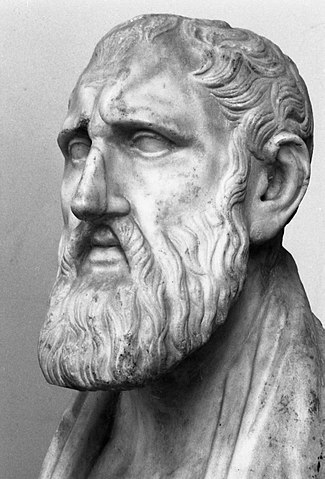
Where did stoicism come from? It was invented in Athens in 300 BC, by Zeno of Citium (modern day Cyprus).
Stoicism is a philosophy that seems to enjoying a revival these days. You see lots of videos of people on Instagram and YouTube who espouse the stoic lifestyle. So, what exactly is stoicism? Stoics believe that there is a path to happiness. They call happiness “eudaimonia”, which is a Greek word that means “good spirit”. “Eu” means good or well, and it is the route of euphoric. “Daiomai” means divide, so it means something like “dividing the good”. Happiness is a useful word, but it also meant a life worth living. The stoics believe that happiness is possible to obtain, but the path is not easy. To achieve eudaimonia, you need to: 1. Accept the world for what it is. 2. Be resistant to desire, addiction, pleasure, fear, or pain. 3. Understand your own nature and act in accordance with it. 4. Live with virtue. When the stoics say virtue, they mean temperance, courage, wisdom, and justice.
Stoicism was founded in Greece in about 300 BC. It wasn’t really invented as evolved from other ideas. The founder is Zeno of Citium. He was the son of a merchant and had a good education, but he lived a very simple life and always wore ragged clothes. He was interested in the teachings of philosophy from a young age and was taught by many famous philosophers. He became involved with the cynics, but he didn’t agree with all of their ideas. The cynics were a school of philosophers who believed that virtue was found by living a life in accordance with nature. They didn’t agree with social norms and they believed someone had to be free from all of these conformities to live an ethical life. The modern meaning of cynic is very different to the early meaning. They believed in reason, virtue, and nature. Zeno believed that a life of virtue was important, but he disagreed with the idea that you couldn’t be a member of society.
Zeno believed that the only thing to strive for was virtue and he believed that “a man conquers the world by conquering himself”. The Greek idea of virtue was a little bit different to the modern idea we have. Virtue meant any kind of excellence and is the quality that makes something good at doing what it is supposed to do. For example, a good pen is a pen that writes well. One of the virtues of a pen is to write well. The cynics believed that virtue was the only true pursuit as well, but Zeno thought that pursuit could be made while a member of society.
Zeno was a student to begin with, but then he became a teacher and grew a school of his own. His ideas were different to those of the cynics and the ideas that had gone before. He and his followers met to talk on the north side of the Agora in Athens. The Agora was an open space for public assemblies in most Greek cities. The word agoraphobia, which is a fear of open spaces, comes from this. Anybody could gather and talk in the Agora and there were stalls selling goods there as well. The Agora of Athens is in ruins, but you can still see a lot of the bricks and the general layout of the space. Zeno met his followers near a painted porch on the north side of the Agora. It was painted with battle scenes and it was called “Stoa Poikile”, which is where the name stoic comes from.
Zeno died in about 262 BC and the stoicism he left was a little different to the one we hear about on Instagram today. His idea of stoicism was to try to live a good life by accepting the world as it is and trying to be useful. After he died and the center of the world, shifted to Rome, stoicism was taken up there. The most famous stoic we hear about is Marcus Aurelius, who tried to live his life by stoic standards and who wrote down all of his thoughts in his “meditations”. The idea of stoicism became more practical and firmly connected to a sense of duty. Stoicism continued on through the Middle Ages and underwent a revival during the Renaissance. It made another comeback during the Victorian era with their fascination with the classical word. And, again, now, it is making a comeback. Many people maybe see it as the solution to our modern world where we have 24 hour SNS and far too many material things. The philosophy has come a long way since Zeno of Citium, And this is what I learned today.
Image By Paolo Monti – Available in the BEIC digital library and uploaded in partnership with BEIC Foundation.The image comes from the Fondo Paolo Monti, owned by BEIC and located in the Civico Archivio Fotografico of Milan., CC BY-SA 4.0, https://commons.wikimedia.org/w/index.php?curid=48067347
Sources
https://en.wikipedia.org/wiki/Stoicism
https://en.wikipedia.org/wiki/Zeno_of_Citium
https://www.thecollector.com/what-is-stoicism-the-stoics-beliefs
https://en.wikipedia.org/wiki/Eudaimonia
https://www.philosophybasics.com/philosophers_zeno_citium.html
https://www.worldhistory.org/agora
